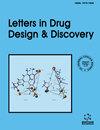肝炎病毒包膜糖蛋白理化性质的生物信息学研究
IF 1.6
4区 医学
Q4 CHEMISTRY, MEDICINAL
引用次数: 0
摘要
背景:全球有4亿人感染乙型和丙型肝炎,是艾滋病毒感染者人数的10倍以上。2019年,估计有110万人死于该病(泛美卫生组织/世卫组织,2023年1月)。目的:本研究旨在对表达肝炎病毒包膜糖蛋白的蛋白进行计算分析,以深入了解其功能。方法:使用不同的计算工具计算极性指数方法2.0v (PIM 2.0v)谱(以前称为极性指数方法谱),并分析每个序列的蛋白质内在失调倾向(PIDP),此外还使用计算工具可以在遗传水平上修改这些蛋白质。结果:各种乙型和丙型肝炎病毒包膜糖蛋白的PIM 2.0v谱和PIDP谱都能够再现它们先前具有的结构和形态相似性。这些剖面中存在的某些模式使这一成就成为可能。结论:计算程序可以重现乙型和丙型肝炎病毒包膜糖蛋白的PIM 2.0v特征谱。这些信息有助于更好地了解这种新出现的病毒。本文章由计算机程序翻译,如有差异,请以英文原文为准。
Bioinformatics Insights on the Physicochemical Properties of Hepatitis Virus Envelope Glycoproteins
Background: Globally, hepatitis B and C infect 400 million people, more than 10 times the number of people living with HIV. In 2019, it was estimated that 1.1 million people died as a result of the disease (PAHO/WHO, January 2023). Objective: This study aimed to conduct a computational analysis of the proteins that express the hepatitis virus envelope glycoproteins in order to gain insight into their function. Method: Different computational tools were used to calculate the Polarity Index Method 2.0v (PIM 2.0v) profile (previously titled Polarity Index Method profile) and the Protein Intrinsic Disorder Predisposition (PIDP) analyzed for each sequence, in addition to computational tools that made it possible to revise these proteins at the genetic level. Results: Both the PIM 2.0v profile and the PIDP profile of various hepatitis B and C virus envelope glycoproteins were able to reproduce the structural and morphological similarities that they had previously. The presence of certain patterns in each of these profiles made this accomplishment feasible. Conclusion: Computational programs could reproduce characteristic PIM 2.0v profiles of the hepatitis B and C virus envelope glycoproteins. This information is useful for a better understanding of this emerging virus.
求助全文
通过发布文献求助,成功后即可免费获取论文全文。
去求助
来源期刊
CiteScore
1.80
自引率
10.00%
发文量
245
审稿时长
3 months
期刊介绍:
Aims & Scope
Letters in Drug Design & Discovery publishes letters, mini-reviews, highlights and guest edited thematic issues in all areas of rational drug design and discovery including medicinal chemistry, in-silico drug design, combinatorial chemistry, high-throughput screening, drug targets, and structure-activity relationships. The emphasis is on publishing quality papers very rapidly by taking full advantage of latest Internet technology for both submission and review of manuscripts. The online journal is an essential reading to all pharmaceutical scientists involved in research in drug design and discovery.

 求助内容:
求助内容: 应助结果提醒方式:
应助结果提醒方式:


